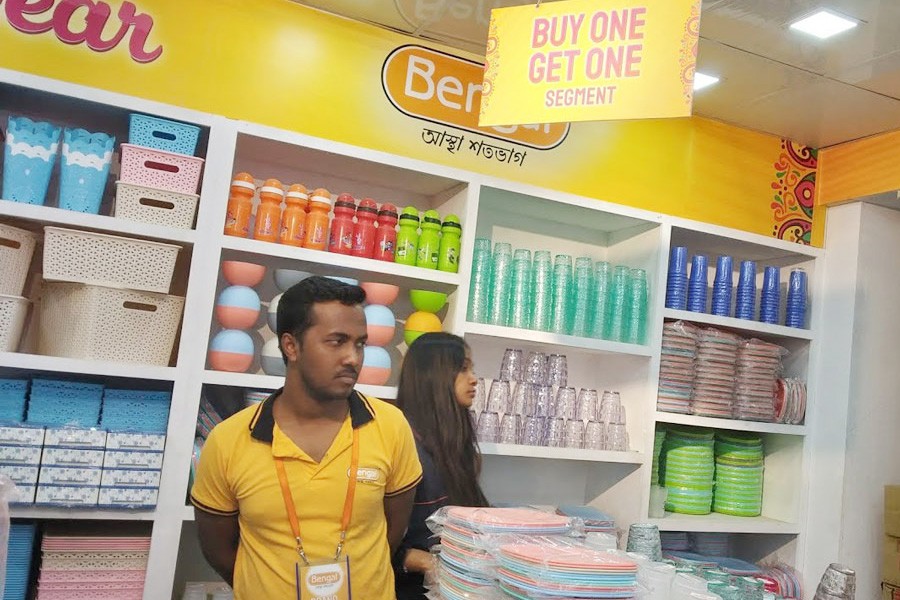
Published :
Updated :

The catchwords, 'Buy one, get one free' are sweeping the entire length and breadth of this land. This is, however, not the only temptation that companies and trading houses use to snare customers. Some would offer a mug, a glass bowl, a plate or even an extra small pouch of the same commodity or something else used for preparation of its dish. For example, purchase of a particular brand of bathroom cleaner earns a smaller container of the same item free. Then one gets a small packet of turmeric powder if one buys a kilogram of fine rice of one or the other brand used for cooking biryani or polao.
Indeed, sales are facing new challenges with more and more companies coming on the scene. Reaching the customers, however, is no problem today, thanks to the print media and more particularly the electronic media and digital gadgets. Sure enough, television advertisements are the most powerful inducement for consumers to make their decision on purchasing a particular item. Full-page displays on newspaper also act as a strong influence to motivate some people.
The digital billboards on street sides have added a new dimension to the ad business but its limitation cannot be denied as well. One only sees the movement of the models who appear for the promotion of commodities but what they say is inaudible. Also this is mostly confined to the large cities and cannot reach a wider clientele base.
However, the reputed companies use other means as well. Once one purchases an article or wears, the customer is bombarded with various messages of the latest offer on the cell phone, the number of which was given at the time of purchase. There are even cases, when they would send messages enquiring what has happened to you if you have not visited their outlets on an important occasion like the Eid or Pahela Baishakh. Such is the aggressiveness of marketing these days.
Most people are gullible to free offers but not all are. That commodities nearing the expiry dates are often on the list of 'buy one, get one free' should not escape notice. After all, the governing motive is to get rid of the commodities as soon as possible. There is no reason to think that traders or companies are incurring losses. Actually, they have garnered profits enough to recompense for the apparent half the price.
Another much used trick is to declare discount offer. A kind of deception is there even in the ad carried in newspapers or hoisted right in front of outlets. It reads like, up to 15, 20 or 25 per cent discount. The figure is of large bold letters but 'up to' is so small that many fail to notice it. A customer is surprised when he knows on purchase of an article that the same variety s/he has bought has only 5.0 per cent discount.
Then there are outlets that declare 50 per cent discount on all products. Why? Clearance sale is the argument. At other times, it is in the interest of a shift into another business. Fair enough. But do they always fix the exact price when they offer discount? Many would argue that it is a hoax. Actually, the tag price is raised almost double the actual price and then comes the discount offer. If it is the case, surely this should count as cheating.
In this context let the argument of an outlet manager of a company against the exchange offer of electronic gadgets may serve as an appetizer. He claims that no one knows at what prices the fridges from Malaysia were imported, because no other company did import the variety. So the exchange rate may more than make up for the so-called discount offer. Similarly, the television price was fixed at a level where the exchange rate did not have any impact on its actual price. Laymen are not aware of such business intricacies or intrigues but they can sense that there is trickery if not outright foul play behind.


 For all latest news, follow The Financial Express Google News channel.
For all latest news, follow The Financial Express Google News channel.